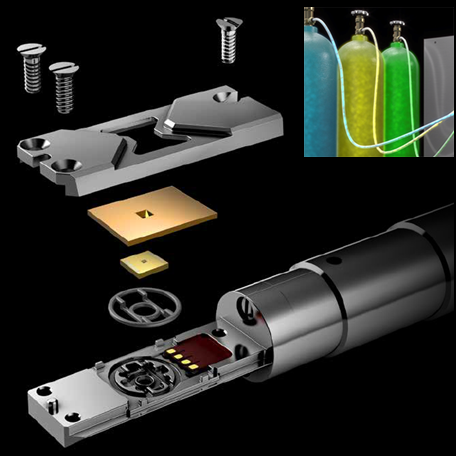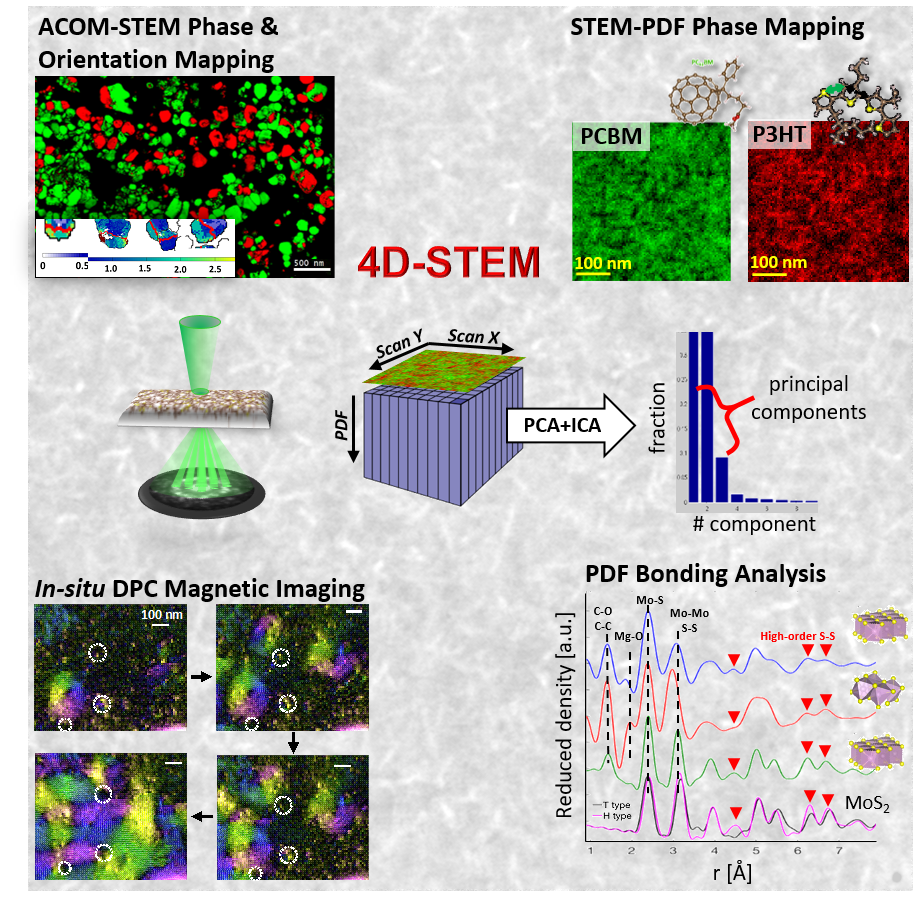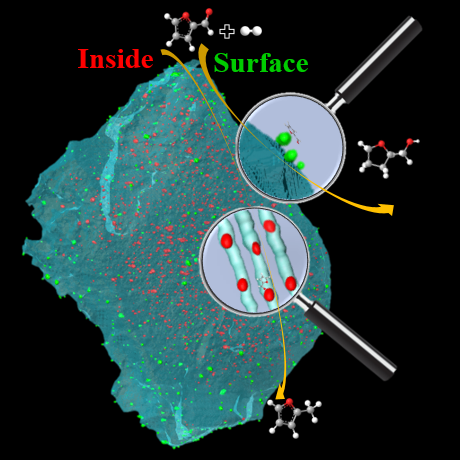Materials Research

We are using state-of-the-art imaging, spectroscopy and diffraction based electron microscopy techniques, both in-situ and ex-situ, to understand materials and provide a link to simulations. When state-of-the-art techniques do not provide sufficient answers, we tackle research problems by dedicated method developments.
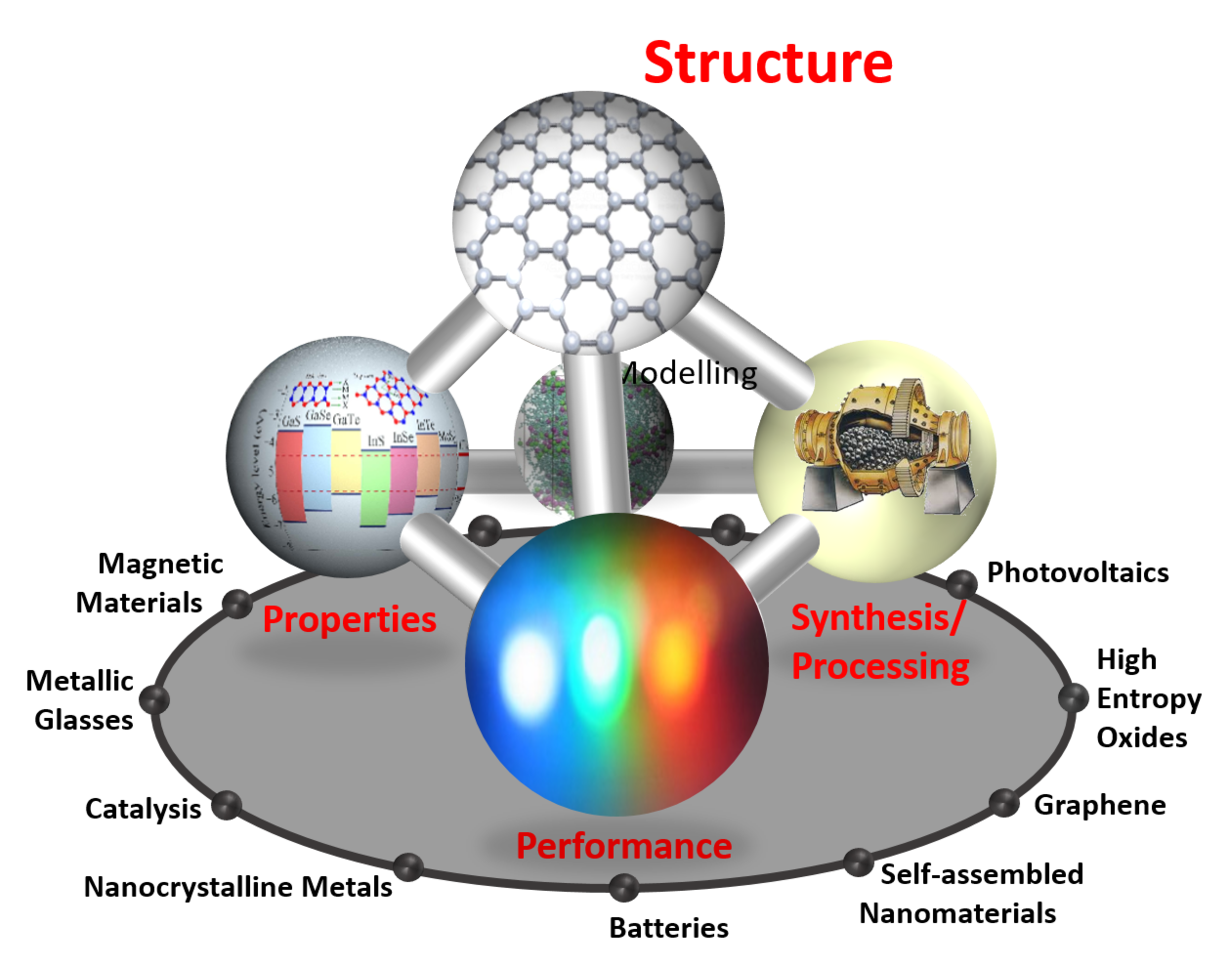
Among various storage strategies, metal hydrides offer high volumetric hydrogen density and favorable reversibility, making them promising candidates for solid-state hydrogen storage. However, their performance is strongly governed by atomic-scale processes such as hydrogen diffusion, defect evolution, and phase transformation, which are still not fully understood.
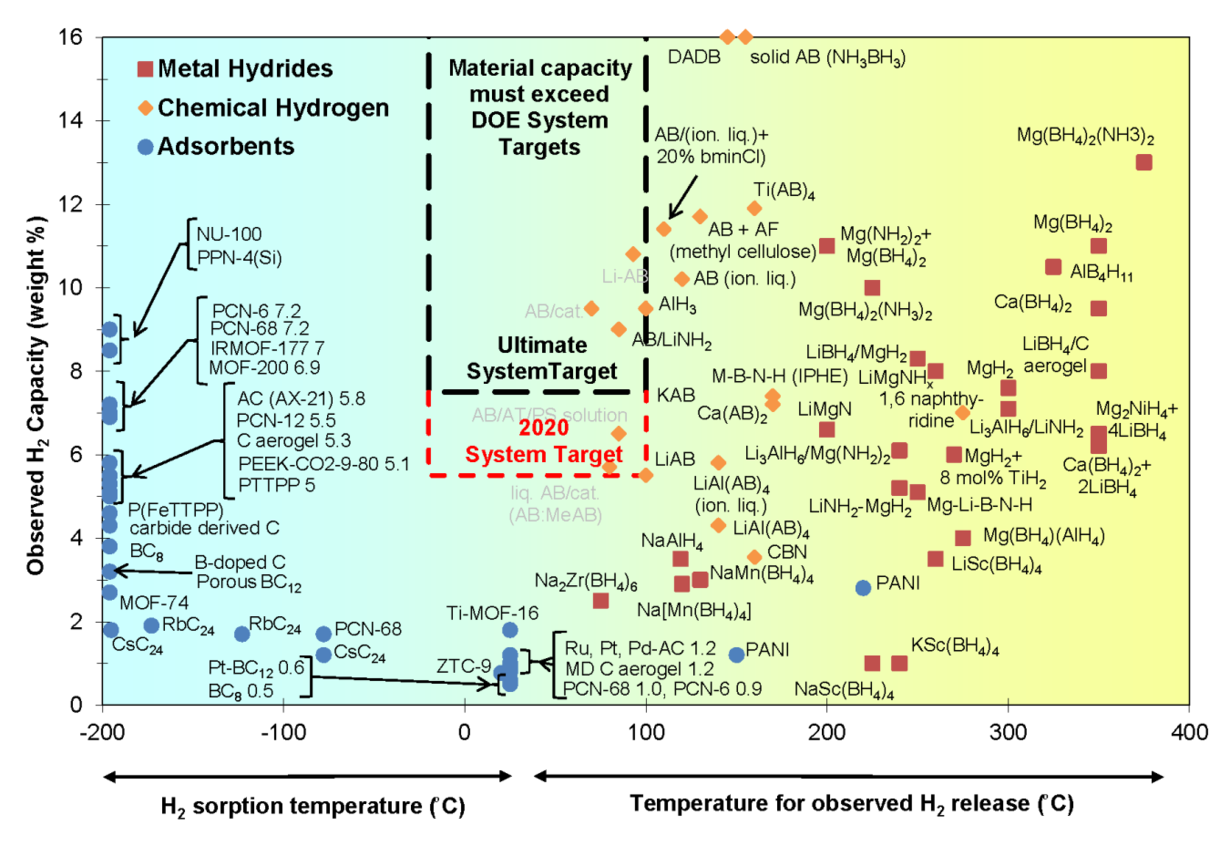
Analytical (S)TEM and diffraction techniques are in principle well established, but when it comes to characterizing beam sensitive materials, their structure and defects, especially under in-situ conditions, obtaining meaningful structural information to understand their performance is highly challenging. We are tackeling this using selected samples, dedicated prepration and low-dose techniques.
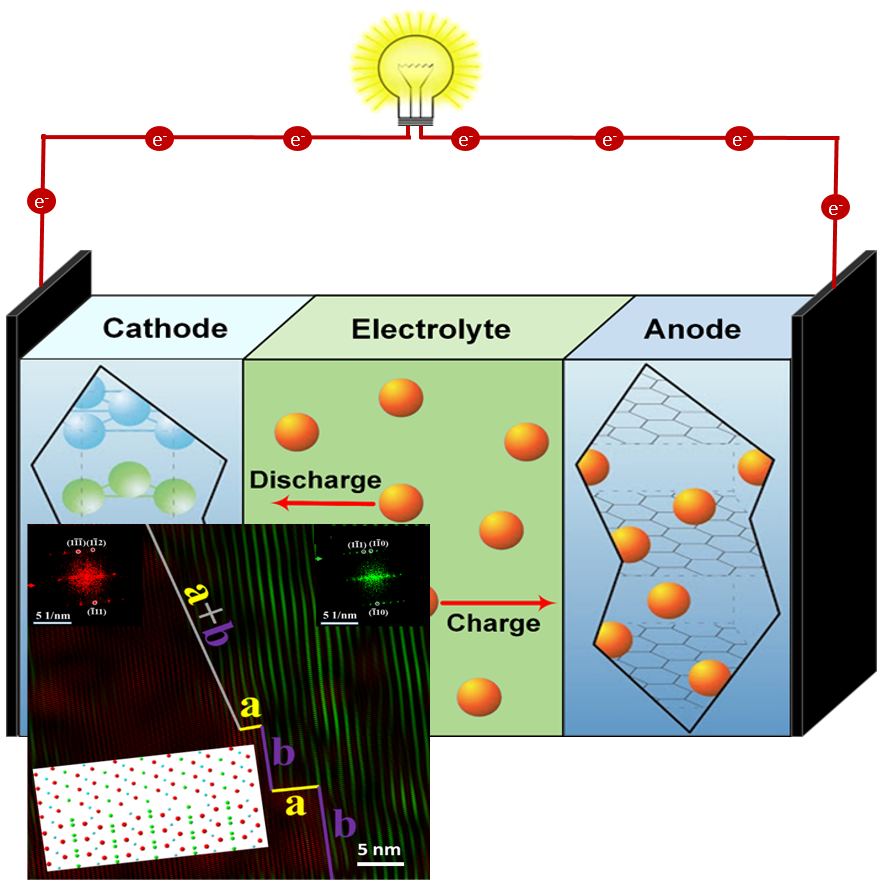
We are addressing structure, composition and morpology from the atomic scale to the micron scale, both in-situ and ex-situ, to better understand the active sites involved in catalytic reactions, their evolution over time as well as diffusion and flow properties of the overall catalyic system.
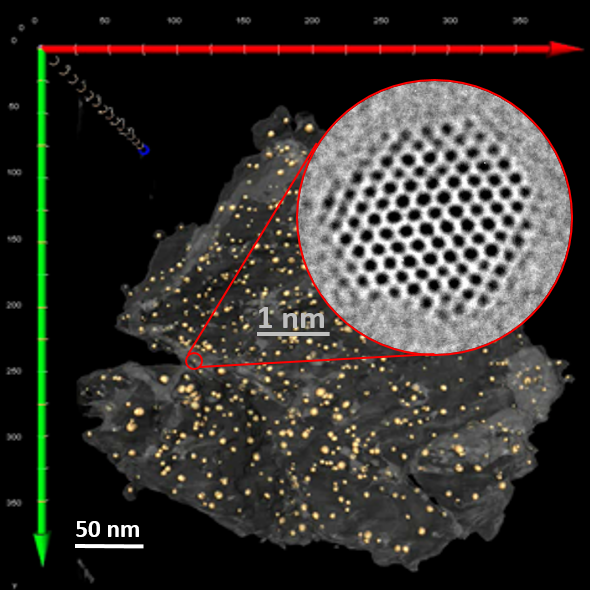
Advanced analytical TEM characterization is used to determine the crystal structure and elemental distribution at atomic resolution as well as electronic structure for each cation.
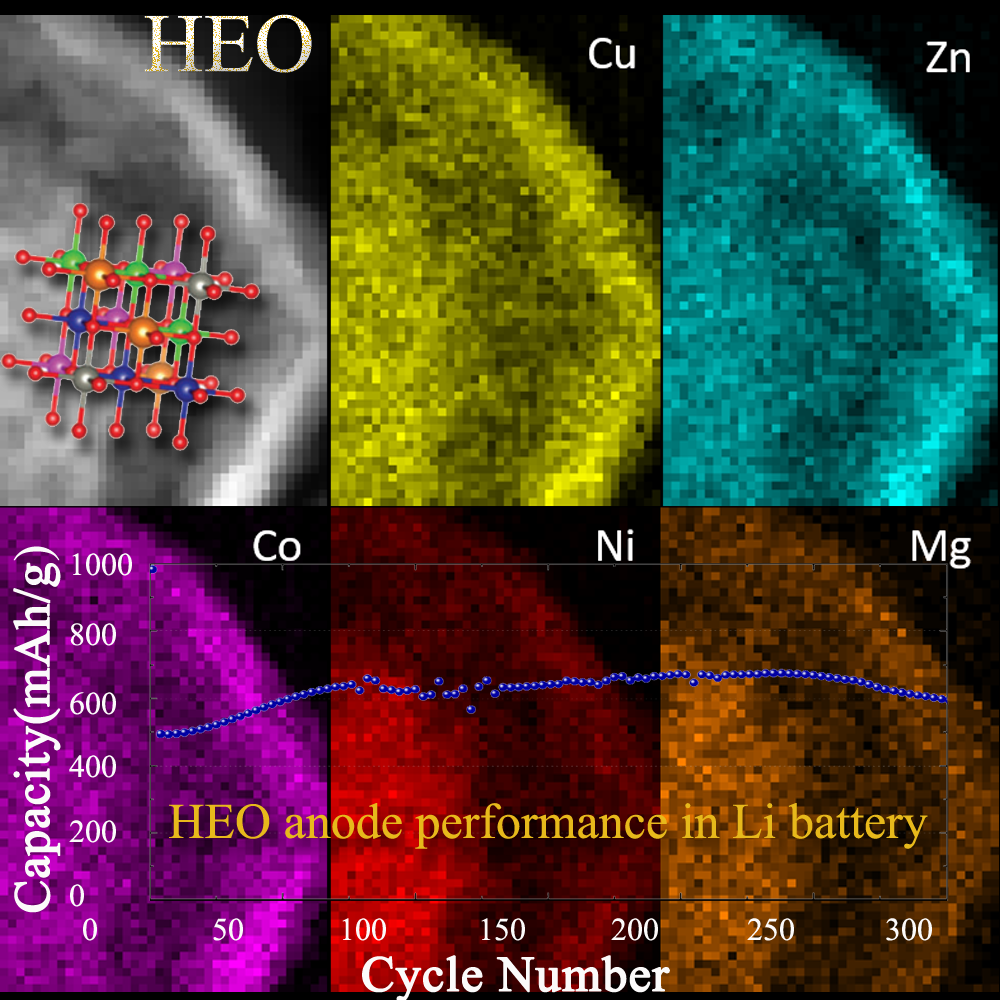
The interface structure and chemistry are characterized by HRTEM, HR-STEM and STEM-EDX/EELS spectrum imaging. In addition, the magnetic and ferroelectric domains can be imaged using 4D-STEM techniques.
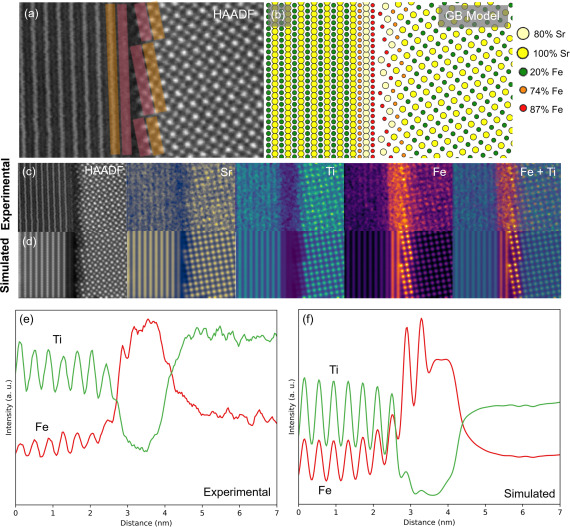
Nanostructured metallic glass–composites (i.e. nanoglasses), consisting of multiple amorphous phases at the nanoscale, exhibit not only significantly improved ductility compared to their monolithic BMG counterparts, but also with exceptional physical, e.g. magnetic, properties. The unique behavior of nanoglasses is speculated to be due to the nanoscale (structural/chemical) phase separation and related changes in atomic short-range order. A clear correlation of the properties with the multiphase glassy structure is an essential task to understand and rationalize their applications.
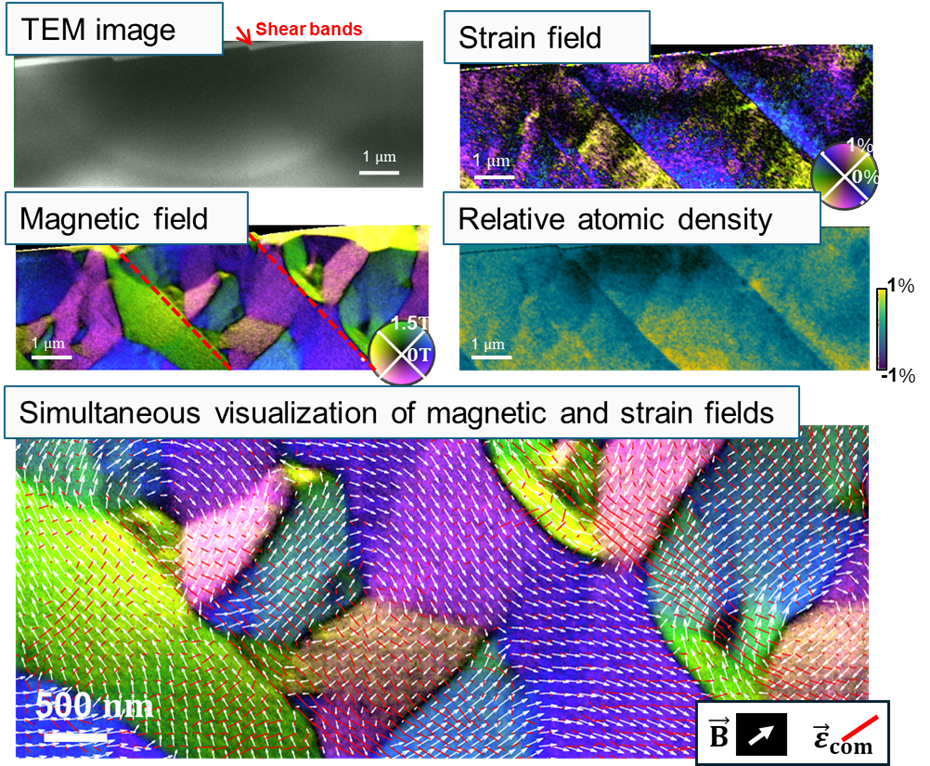
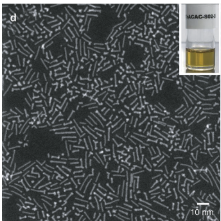
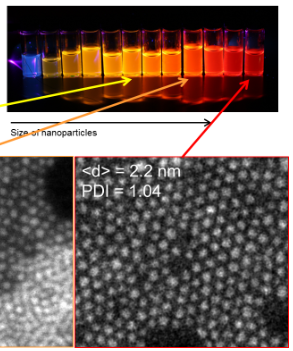

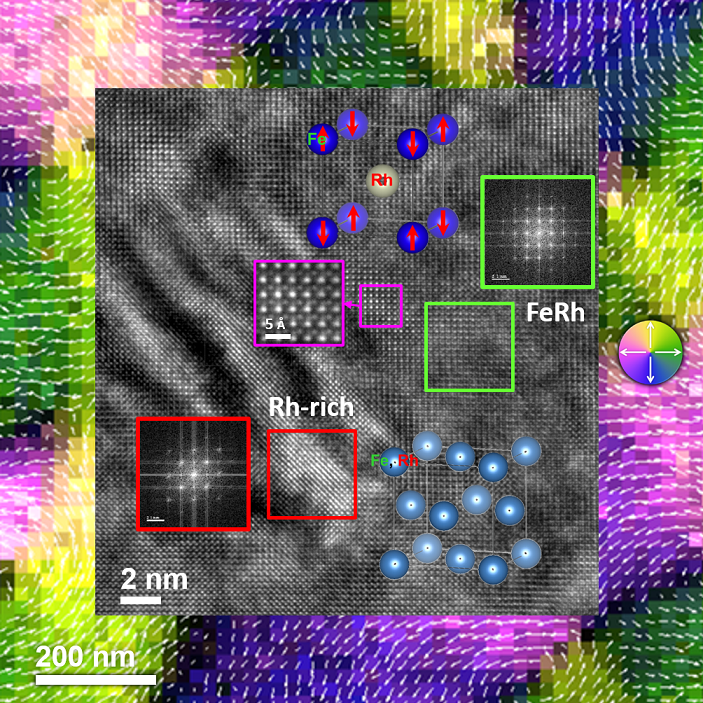
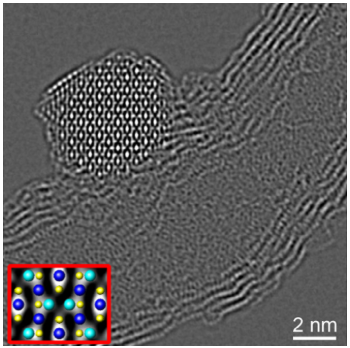
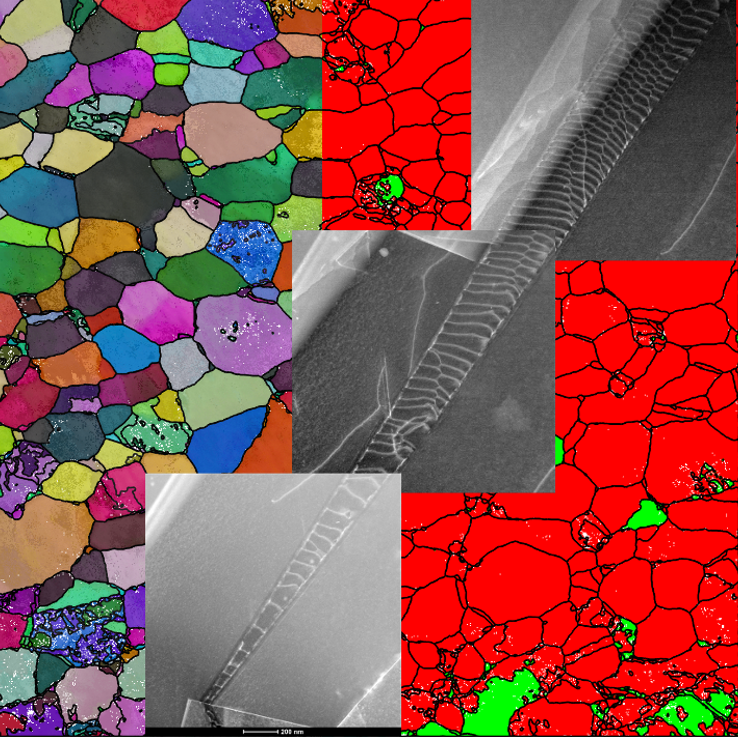
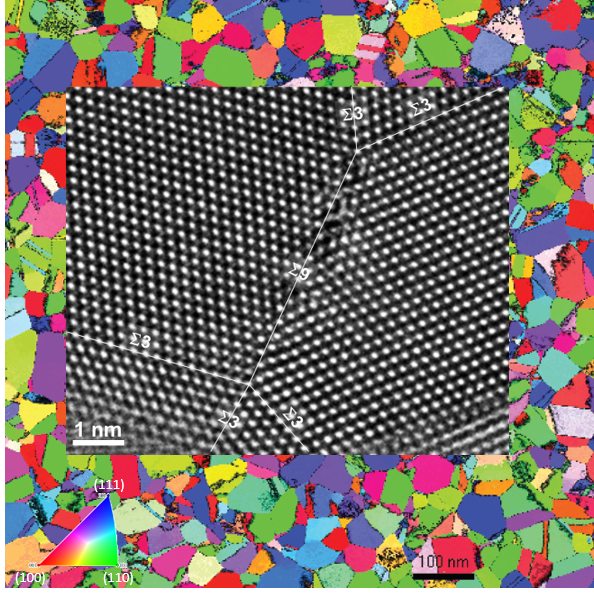
Quantitative structural description of nanocrystalline metals
Mechanical deformation
Thermal evolution
link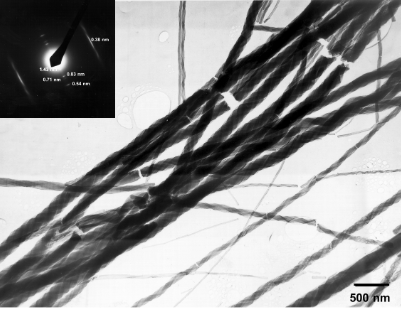
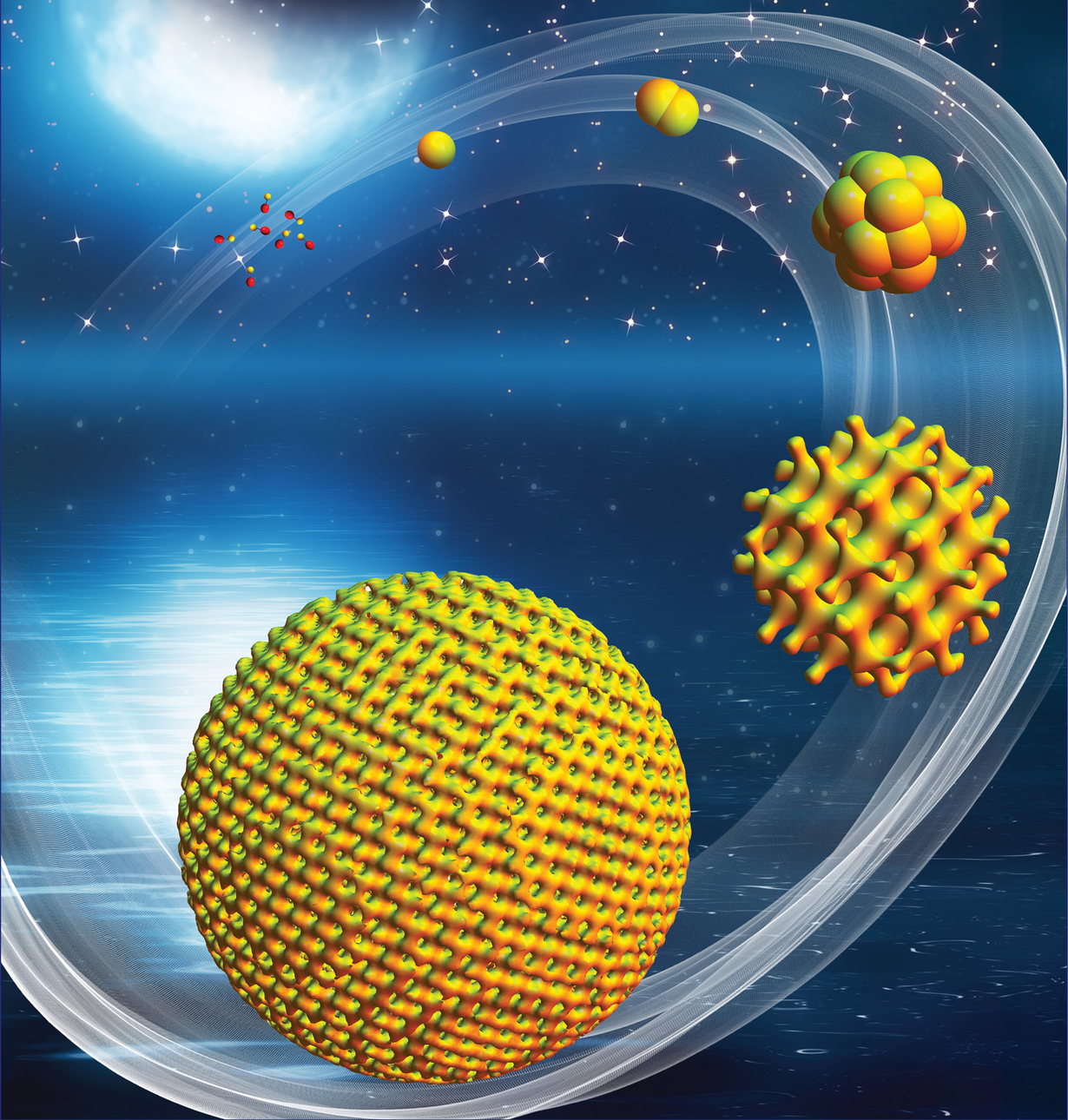
Low-dose TEM & electron tomography characterization of complex hybrid materials.
linkMethod Development
We are focusing on three main methdology areas in repsonse to the needs of our collaborations partners, developing approaches for dedicated structural and functional analysis of materials at the atomic or nanoscale.
In-situ TEM
In-situ and operando TEM provides a direct link between structural evolution and materials properties or function and the ability to identify transient structures, which cannot be observed ex-situ. We are using and optimizing the techniques, combining them in particular with various 4D-STEM and spectroscopic techniques.
- Mechanical testing
- Heating
- Cooling
- Biasing
- Electrochemistry
- Gas environment
4D-STEM
4D-STEM techniques have been shown to be extremely powerful, opening the possibility of high-end structural characterization using ptychography, pair distribution function mapping or quantitative crystal orientation analysis as well as functional characterization by quantitatively measuring magnetic or electric field distributions.
- ACOM-STEM: Crystal orientation mapping
- STEM-PDF: Atomic pair distribution function mapping for local atomic bonding and coordination in disordered and amorphous materials
- STEM-DPC and STEM-iDPC: Differential phase contrast imaging for local mean potential and magnetic field imaging
Electron Tomography
We are developing electron tomography as an approach to quantify the 3D nano and micro structure. In collaborations, we are using this experimental 3D structure as basis for diffusion or flow simulations.
- STEM tomography
- EDX tomography
- FIB Slice & View
- Quantitative tomography analysis

Assessing radiation damage is essential for reliable in-situ TEM analysis.
link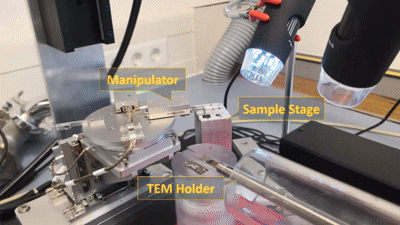
We develop improved handling and preparation methods—especially for air-sensitive and FIB-made samples—to keep TEM specimens as close as possible to their native state.
link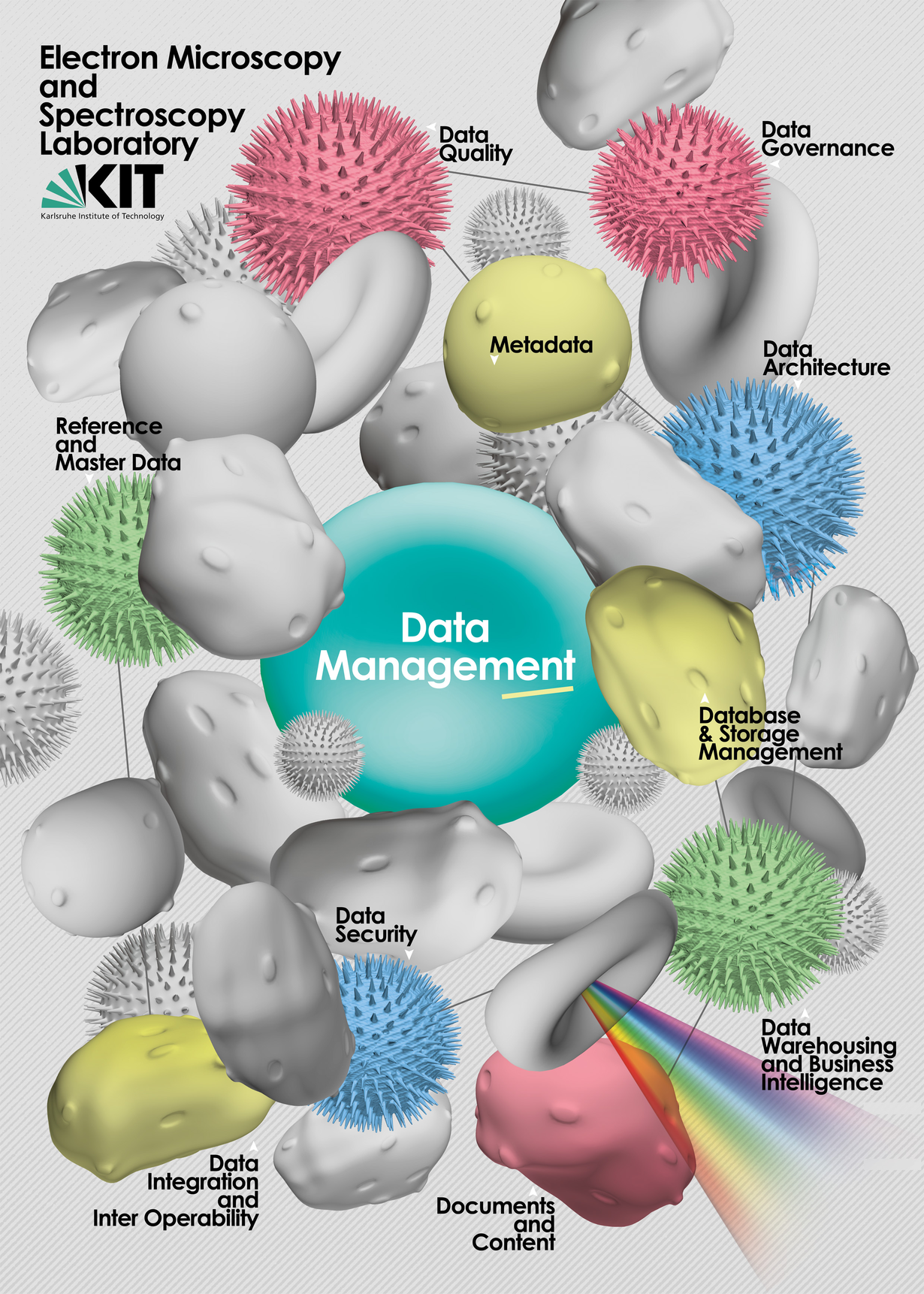
RDA aims to make the research process as efficient as possible by providing structured access to information, meeting expectations and requirements of the university, research funders, and industry as well.
link

